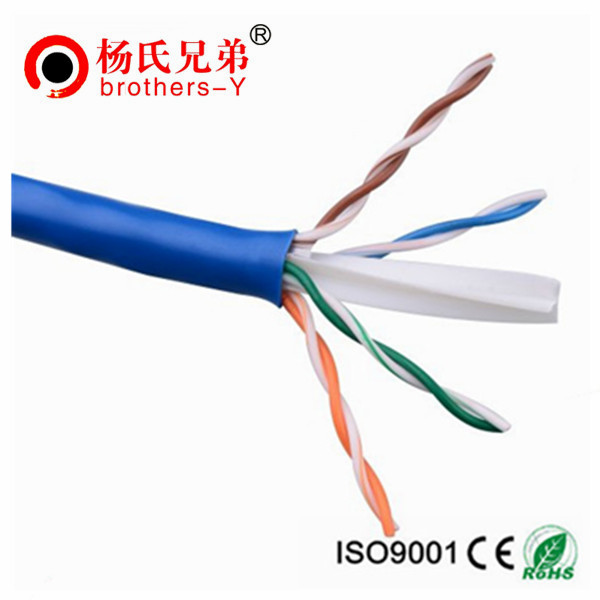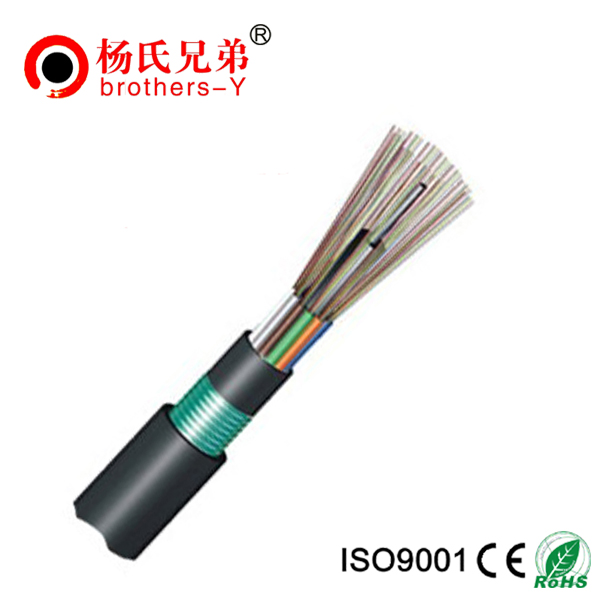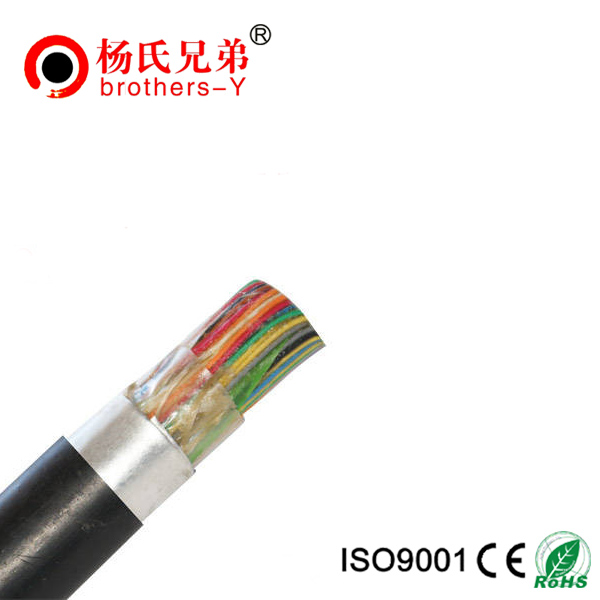Current location: Home » News Center » Industry dynamics » Brothers-Y News
» RJ45 Colors and Wiring Guide Diagram TIA/EIA 568A/568B
RJ45 Colors and Wiring Guide Diagram TIA/EIA 568A/568B
RJ45 Colors and Wiring Guide Diagram TIA/EIA 568A/568B
Ethernet Cable Colors: Color Code Standards
The information listed here is to assist Network Administrators in the
color coding of Ethernet cables. Please be aware that modifying Ethernet
cables improperly may cause loss of network connectivity. Use this
information at your own risk, and ensure all connectors and cables are
modified in accordance with TIA standards.
Basic Theory
By looking at a T-568A UTP Ethernet straight-thru cable and an Ethernet crossover cable with a T-568B end, we see that the TX (transmitter) pins are connected to the corresponding RX (receiver) pins, plus to plus and minus to minus. You can also see that both the blue and brown wire pairs on pins 4, 5, 7, and 8 are not used in either standard. What you may not realize is that, these same pins 4, 5, 7, and 8 are not used or required in 100BASE-TX as well. So why bother using these wires? For one thing it's simply easier to make a connection with all the wires grouped together. Otherwise you'll be spending time trying to fit those tiny little wires into each of the corresponding holes in the RJ-45 connector.
.jpg)
T-568A Straight-Through Ethernet Cable | Cat5e Cables & Cat6 Cables
The T-568A standard is supposed to be used in new network installations. Most off-the-shelf Ethernet cables are still of the T-568B standard; however, it makes absolutely no functional difference in which you choose.
T-568B Straight-Through Ethernet Cable | Cat5e Cables & Cat6 Cables
Both the T-568A and the T-568B standard Straight-Through cables are used most often as patch cords for your Ethernet connections. If you require a cable to connect two Ethernet devices directly together without a hub or when you connect two hubs together, you will need to use a Crossover cable instead.
RJ-45 Crossover Ethernet Cable | Cat5e Crossover Cables & Cat6 Crossover Cables
A good way of remembering how to wire a Crossover Ethernet cable is to wire one end using the T-568A standard and the other end using the T-568B standard. Another way of remembering the color coding is to simply switch the Green set of wires in place with the Orange set of wires. Specifically, switch the solid Green (G) with the solid Orange, and switch the green/white with the orange/white.
How to Build an Ethernet Cable Instructions:
1. Pull the cable off the reel to the desired length and cut using wire cutters or scissors. If you are pulling cables through holes, it's easier to attach the RJ-45 plugs after the cable is pulled. The total length of wire segments between a PC and a switch or between two PC's cannot exceed 100 Meters (328 feet) for 100BASE-TX and 300 Meters for 10BASE-T.
2. Start on one end and strip the cable jacket off (about 1") using a wire stripper or a knife. Be extra careful not to nick the wires, otherwise you will need to start over.
3. Spread, untwist the pairs, and arrange the wires in the order of the desired cable end. Flatten the end between your thumb and forefinger. Trim the ends of the wires so they are even with one another, leaving only 1/2" in wire length. If it is longer than 1/2" it will be out-of-spec and susceptible to crosstalk. Flatten and insure there are no spaces between wires.
4. Hold the RJ-45 plug with the clip facing down or away from you. Push the wires firmly into the plug. Inspect each wire is flat even at the front of the plug. Check the order of the wires. Double check again. Check that the jacket is fitted right against the stop of the plug. Carefully hold the wire and firmly crimp the RJ-45 with the crimp tool.
5. Check the color orientation, check that the crimped connection is not about to come apart, and check to see if the wires are flat against the front of the plug. If even one of these are incorrect, you will have to start over. Test the Ethernet cable.


How to wire fixed Ethernet Cables:
1 Run the full length of ethernet cable in place, from endpoint to endpoint, making sure to leave excess.
2 At one end, cut the wire to length leaving enough length to work, but not too much excess.
3 Strip off about 2 inches of the ethernet cable sheath.
4 Align each of the colored wires according to the layout of the jack.
5 Use the punch down tool to insert each wire into the jack.
6 Repeat the above steps for the second RJ45 jack.
If an ethernet cable tester is available, use it to verify the proper connectivity of the cable. That should be it, if your ethernet cable doesn't turn out, look closely at each end and see if you can find the problem. Often a wire ended up in the wrong place or one of the wires is making no contact or poor contact. Also double check the color coding to verify it is correct. If you see a mistake or problem, cut the end off and start again. A ethernet cable tester is invaluable at identifying and highlighting these issues.
When sizing ethernet cables remember that an end to end connection should not extend more than 100m (~328ft). Try to minimize the ethernet cable length, the longer the cable becomes, the more it may affect performance. This is usually noticeable as a gradual decrease in speed and increase.
Ethernet Cable Tips:
• A straight-thru cable has identical ends.
• A crossover cable has different ends.
• A straight-thru is used as a patch cord in Ethernet connections.
• A crossover is used to connect two Ethernet devices without a hub or for connecting two hubs.
• A crossover has one end with the Orange set of wires switched with the Green set.
• Odd numbered pins are always striped, even numbered pins are always solid colored.
• Looking at the RJ-45 with the clip facing away from you, Brown is always on the right, and pin 1 is on the left.
• No more than 1/2" of the Ethernet cable should be untwisted otherwise it will be susceptible to crosstalk.
• Do not deform, do not bend, do not stretch, do not staple, do not run parallel with power cables, and do not run Ethernet cables near noise inducing components.
Information about
- Analysis of the Underground Transmission and Distribution Cables Market
- Key Elements for Cable Installation Success
- More details & technology between network cable
- Difference between CAT 5e patch cable and CAT 5e. crossover cable
- Twisted-Pair Cable
- What Is The Difference Between Cat 5, Cat 5e, and Cat 6 Cable
- CAT 6A shielded systems are becoming the ideal choice for ... 10GBASE-T over copper cabling.
- Analysis of the North American Wire and Cable Materials Market
- How to install additional phone lines?
New Products
Top articles
- Are there any advantages to using Cat 6 cable for computer networking?
- Are there any problems with using patch cables that are less than a foot long? If so, what are they?
- Letter of Invitation for CTICC
- What are some common uses for Cat5e ethernet cable?
- 10 Gigabit Ethernet interconnect solutions: Investigate carefully before choosing
- Mixing CAT 6A shielded cable with CAT 6 UTP or CAT 5e UTP cables isn’t an issue.
- What cable do I use to connect a PC to a DSL or Cable modem?
- Analysis of the Underground Transmission and Distribution Cables Market
- Is there any benefit to using CAT 5e solid conductor cable?
- Mixing CAT 6A shielded cable with CAT 6 UTP or CAT 5e UTP cables isn’t an issue
Latest articles
- 2014 CeBIT Australia
- 2014 CeBIT Germany
- 2014 International CES
- Vietnam Telecomp 2013
- ROHS Certificate For Lan Cable
- CE Certificate For Power Cable
- ROHS Certificate For Power Cable
- UL Certificate For Communication Cable
- Are there any advantages to using Cat 6 cable for computer networking?
- Are there any problems with using patch cables that are less than a foot long? If so, what are they?














